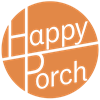Bringing the Butterfly Diagram to Life: Social Enterprises Accelerating the Circular Transition
The circular economy diagram, or the “butterfly” diagram as it’s also called, is a key illustration that helps explain the circular economy.
Divided into two halves — the biological cycle and the technical cycle — the diagram shows an ideal flow of materials and products through the economy.
Republished courtesy of Ellen MacArthur Foundation
The circular economy diagram explained
The diagram shows that in the circular economy, “waste” is repurposed, minimised, and eliminated, and the value of these materials is preserved as they circulate throughout the economy.
The diagram also highlights how the circular economy restores nature by using regenerative agriculture and forestry to improve the environment while driving economic value.
The visual is a fantastic teaching tool, and it gives organisations a starting point for thinking about their role in our economy from a big-picture view.
But one thing we’ve learned from working in this field is the importance of bringing these concepts to life.
Terms like “reuse” and “redistributing” may feel quite abstract on the surface, but they’re much more exciting when we can explore the stories behind them.
On the HappyPorch Radio podcast, we’ve talked to dozens of entrepreneurs, intrapreneurs, and other innovators making the circular economy a reality.
Today, we wanted to map some of these conversations back to specific parts of the butterfly diagram for your inspiration.
To listen to these conversations, check out the HappyPorch Radio podcast, where we talk about all things circular economy, software, and technology.
The Biological Cycle
We’ll start with the biological cycle, which we largely explored in season six of the podcast. The biological cycle includes how we handle organic materials, and ways we can improve how food is grown, distributed, and consumed.
Innovating in Food Reuse: Bii / Foodwise
One social innovator we spoke to was Julia Venn, co-founder of the social enterprise Bii / Foodwise, which fights against food waste and food insecurity.
In our conversation with Julia, she unpacked the importance of tackling food waste and loss, and how Foodwise connects surplus food from donor to receiver to minimise food waste.
Innovating in Regeneration: Sabon Sake
Moving to the regenerative aspect of the diagram, we reflect on how the circular economy shouldn’t just minimise environmental damage but also restore nature. To explore this idea, we’ve spoken to many inspiring leaders, including Audrey S-Darko from Sabon Sake.
Sabon Sake connects the dots between soils, farmers, and communities. The team looks for ways to turn agricultural waste (or “resources” as Audrey likes to think of it) into value-added products. They’re also on a mission to educate the rural communities they work with so that change can start on a local level.
The Technical Cycle
There’s so much more to be said about the biological cycle, but let’s now move on to the technical cycle — the right side of the butterfly diagram.
In season five of our podcast, we spoke to more than a dozen innovators in this space, and are constantly meeting other impressive leaders.
Here are a few of the highlights from our more technical conversations.
Innovating in Reuse: Reath
Claire Rampen and Emily Rogers of Reath are focusing on big-picture change. Since 2019, they’ve been on a mission to eliminate single-use packaging.
Reath are tackling the packaging infrastructure problem, providing brands with custom software to track packaging end-to-end.
Reath actually engaged HappyPorch to prototype and develop their software, a project we were delighted to take on. The podcast explores the partnership and how the software came to be.
Innovating in Recycling and Reuse: TerraCycle
TerraCycle is an incredible business known for their attempts to recycle virtually everything.
They’re working with prominent corporations in more than twenty markets around the world. It’s fair to say they are major innovators in the field of recycling, but they are also working on solutions to reduce the need for recycling altogether. (Which is even more important!)
Their global reuse platform Loop provides brands with durable, beautiful multi-use packaging, and the team are always looking for ways to eliminate the need for recycling wherever possible.
Innovating in Sharing: Kaer
Another company we love is Kaer, which offers air-conditioning-as-a-service. Kaer is an inspiring example of how it’s possible to disrupt an industry and make it far more efficient and less polluting.
They provide air conditioning to businesses as a service, so that companies simply pay for the amount they use.
The businesses are essentially sharing the equipment and infrastructure needed to keep their offices cool, dramatically lowering energy and equipment usage over time.
In our view, this Product-as-a-Service business model encourages companies to embrace the circular economy, since eliminating efficiencies within the system automatically translates to better business.
Explore circular economy and technology
These are just a few of the many amazing social enterprises that have been guests on the HappyPorch Radio podcast.
By listening to their stories of how they’re accelerating the circular transition, we can learn from their experience — and perhaps be inspired to innovate in whatever industry we work in.
Tune in to the podcast to hear interviews with leaders in the circular space, and to discover how technology and software are accelerating the circular transition.
As software consultants, we’re excited that software can enable so many different aspects of the circular economy, when used sensibly and in context!


